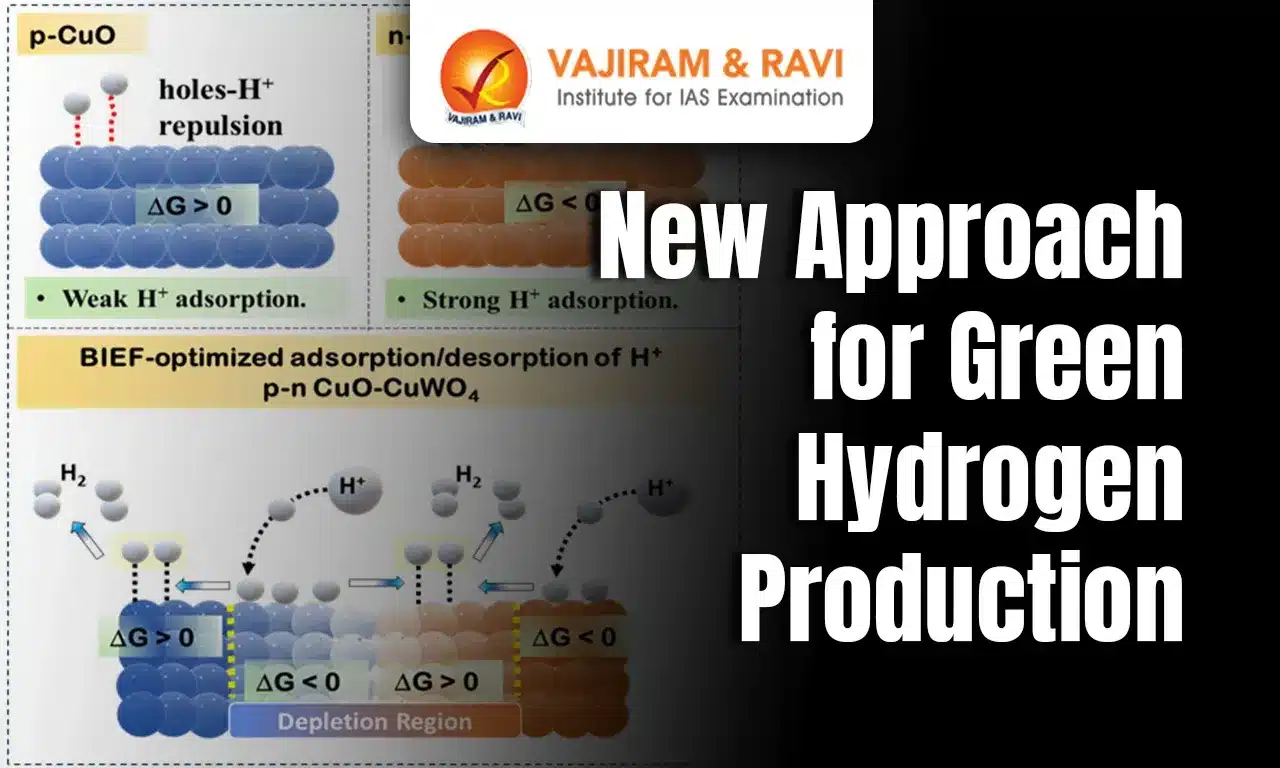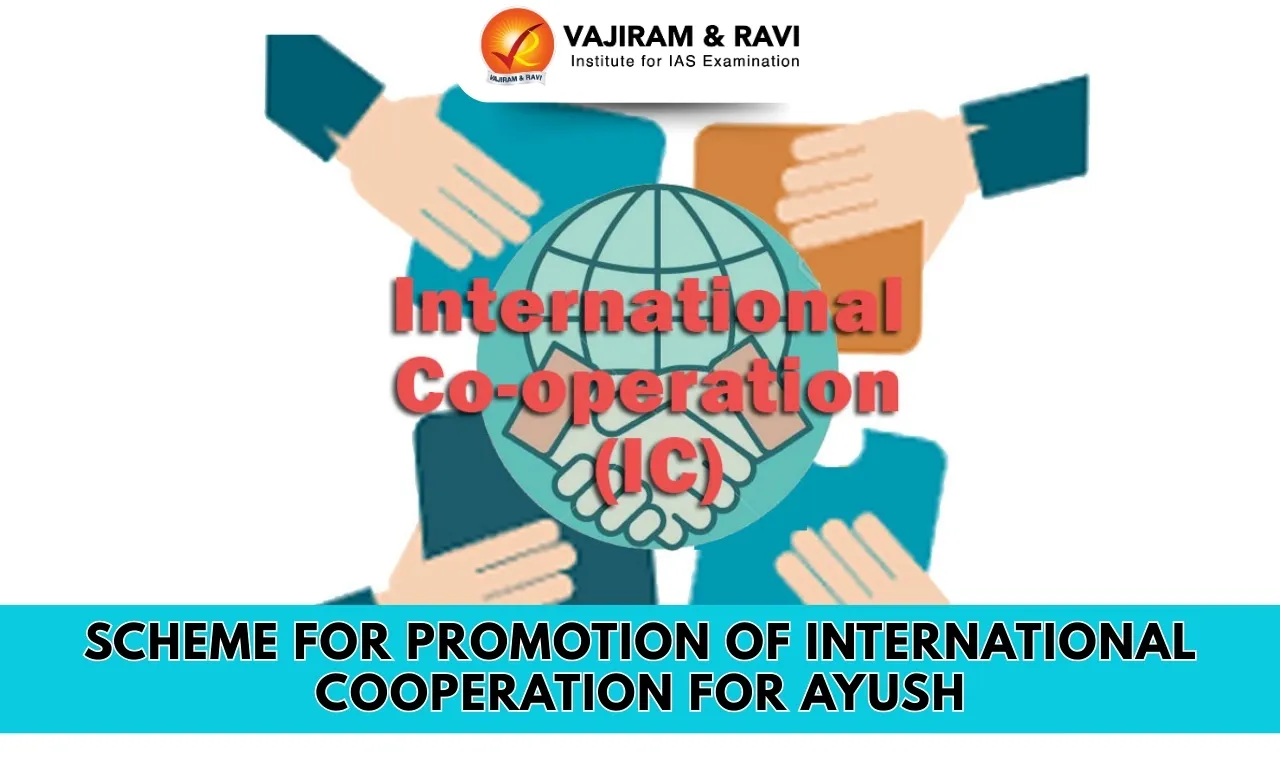New Approach for Green Hydrogen Production Latest News
Researchers at the Institute of Nano Science and Technology (INST), Mohali, have developed new insights into proton adsorption on catalyst surfaces, paving the way for more efficient green hydrogen production.
Key Scientific Findings
- A novel heterostructure, combining Copper Tungsten Oxide (CuWO₄) and Copper Oxide (CuO), has been created to exploit the Built-In Electric Field (BIEF) effect for enhanced hydrogen evolution.
- The structure is formed by growing CuWO₄ nanoparticles over a Cu(OH)₂ precursor, leading to a p-n heterojunction that creates an asymmetric electronic environment.
- This BIEF plays a crucial role in modulating proton adsorption and desorption, directly influencing the Hydrogen Evolution Reaction (HER) efficiency.
Mechanism of Proton Adsorption
- The interface between CuO and CuWO₄ shows variation in Gibbs Free Energy (∆G), especially near the depletion region.
- A gradient in ∆G across this interface enhances hydrogen adsorption at CuO and desorption at CuWO₄, making the system more favourable for HER.
- This showcases “negative cooperativity”, where increased proton binding at one site reduces affinity at other sites, facilitating proton desorption, a key step in alkaline hydrogen production.
What is Green Hydrogen?
- Green Hydrogen is produced through the electrolysis of water using renewable energy sources like solar, wind, or hydropower, releasing no greenhouse gases.
- It is a clean, sustainable, and flexible energy carrier, with water vapour as its only by-product.
- Unlike grey hydrogen (from fossil fuels), green hydrogen contributes to zero carbon emissions.
Green Hydrogen Production Methods
- Alkaline Electrolysis: Mature, low-cost method using KOH/NaOH; needs nickel/platinum electrodes.
- Proton Exchange Membrane (PEM) Electrolysis: High efficiency, fast, but expensive due to precious metal catalysts.
- Solid Oxide Electrolysis (SOEC): Works at 700–1000°C, enables co-electrolysis of H₂O and CO₂, but involves complex materials and high costs.
New Approach for Green Hydrogen Production FAQs
Q1. What is green hydrogen?
Ans. Green hydrogen is hydrogen produced using renewable energy sources like solar or wind, without emitting carbon dioxide.
Q2. What is the new method recently developed for green hydrogen production?
Ans. Scientists have developed methods like photoelectrochemical water splitting, solid oxide electrolysis, and enzyme-assisted electrolysis, improving efficiency and scalability.
Source: PIB
Last updated on December, 2025
→ Check out the latest UPSC Syllabus 2026 here.
→ Join Vajiram & Ravi’s Interview Guidance Programme for expert help to crack your final UPSC stage.
→ UPSC Mains Result 2025 is now out.
→ UPSC Notification 2026 is scheduled to be released on January 14, 2026.
→ UPSC Calendar 2026 is released on 15th May, 2025.
→ UPSC Prelims 2026 will be conducted on 24th May, 2026 & UPSC Mains 2026 will be conducted on 21st August 2026.
→ The UPSC Selection Process is of 3 stages-Prelims, Mains and Interview.
→ UPSC Result 2024 is released with latest UPSC Marksheet 2024. Check Now!
→ UPSC Toppers List 2024 is released now. Shakti Dubey is UPSC AIR 1 2024 Topper.
→ Also check Best IAS Coaching in Delhi
Tags: New Approach for Green Hydrogen Production prelims pointers upsc prelims current affairs

















